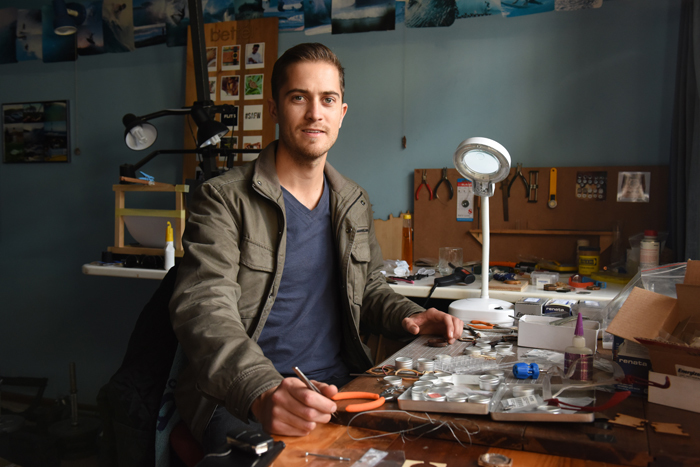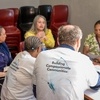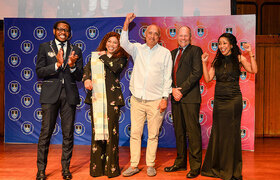Stuart Swan: On water rockets and persistence
21 October 2016 | Story by Newsroom
On 26 August 2015 at 09:37, the Ascension III water rocket soared into the sky for the first time. It measured 2.68 m in length, weighed less than 1.5 kg and reached a speed of 550 km/h in 0.5 seconds. Most importantly, it shot to an altitude of 835 m, beating the previous world record by 217 m.
At the time of the Ascension III's maiden flight, the rocket was fitted with an on-board flight computer, camera, parachute and parachute deployment system. The rocket was made mostly out of carbon fibre, launched from a custom-built launch pad and had been created on a shoestring budget. The pressure vessel of the rocket was also coated with a novel sealing solution, which has since been patented.
The team who built the rocket had worked for two years to get that point and they had suffered their fair share of setbacks along the way. Mechanical engineering student Stuart Swan, who worked with Professor Arnaud Malan as well as fellow students Donovan Changfoot and William Liw Tat Man, remembers having to go back to the drawing board on at least three separate occasions.
I think the fact that we were very persistent is what led to the success of the project.”
“The first time we attempted a launch, in November 2013, the rocket was about the same size, but it had no recovery system or even a camera,” remembers Swan.
“We were happy because when we launched it, it disappeared into the clouds, but of course it also crashed catastrophically.”
They also realised that although the carbon they had used for the rocket was very strong, and the actual fibers of the carbon were able to expand at pressure, the epoxy resin used to keep it together formed micro-cracks under pressure, allowing air to seep through the resin.
“The rules for the world record state that a rocket has to stand at full pressure for ten minutes before launch, so we had to find a way of solving the problem of the leaks,” Swan says.
“It took us a little while to find a solution that was lightweight, that we could realistically manufacture ourselves, and that was also cost effective. In the end, we found a way of using existing materials but applying them in a new way. It actually worked!”
Try and try again
The next time they tried to launch it, the rocket didn't even take off despite the fact that Liw had designed a new launch pad made to withstand about 550 kg of thrust. This led to other innovations being made, including a fail-safe recovery system and a spring-loaded mechanism for the release of the parachute.
“I remember when we approached Professor Malan with our idea right at the start. Even though at that point we only had three months to attempt to break the record for 2013, he fully supported us. But I remember he gave us one condition: no quitting allowed. I think the fact that we were very persistent is what led to the success of the project.”
Now their design and sealing system for pressure vessels is being patented in the hope that it will have applications in the aerospace industry and other gas storage applications.
So what does Swan hope for the future?
“Right now I'm still working with Professor Malan, but I'm also working on the design of a device used for diagnosing TB, and I am working on a project with my dad. My wife and I have our own design company that we are hoping can be an umbrella platform for a lot of different ideas,” he replies.
“Most of all, I would like to spot manufacturing opportunities in South Africa to create jobs and use business as a tool to empower others as well as sustainably break cycles of oppression within marginalised people groups.”
Story Ambre Nicolson. Photo Michael Hammond.
Watch the video:
Impact through Innovation: Stuart Swan
 This work is licensed under a Creative Commons Attribution-NoDerivatives 4.0 International License.
This work is licensed under a Creative Commons Attribution-NoDerivatives 4.0 International License.
Please view the republishing articles page for more information.










